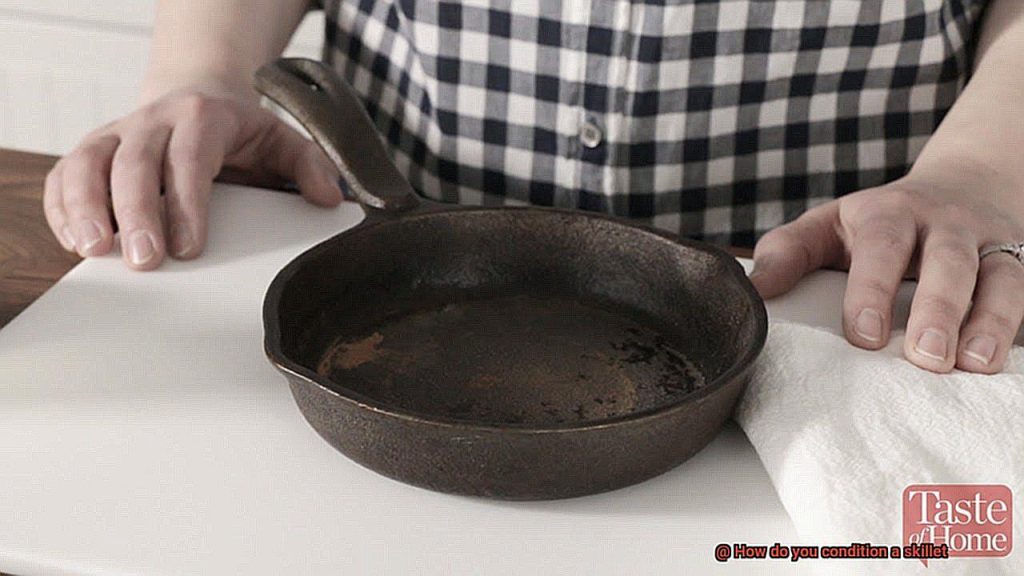Do you find yourself frustrated when your food sticks to your skillet, despite using oil or butter? Are you tired of constantly replacing your cookware due to rust and wear and tear? Fear not, my friend. The secret to a non-stick, long-lasting skillet lies in proper seasoning and conditioning.
But what exactly does conditioning mean? Essentially, it’s the process of adding a layer of oil to the surface of the skillet and heating it up to create a non-stick coating. Not only does this improve the longevity of your skillet by preventing rust, but it also adds flavor to your food.
So where do you begin? What type of oil should you use? And how hot should your skillet be?
In this post, we’ll cover all the essential tips and techniques for conditioning your skillet like a pro. We’ll delve into the differences between seasoning and conditioning, explore various oils that work best, and guide you through each step to ensure that your skillet is adequately seasoned and ready for cooking. Plus, we’ll share some helpful maintenance tips so that you can avoid common mistakes that could ruin your hard work.
If you want to take your cooking skills up a notch and create dishes that slide effortlessly off the skillet without sticking, keep reading.
Contents
What is Skillet Conditioning?
Skillet conditioning is the key to ensuring your cast iron, stainless steel, or carbon steel skillet lasts for generations.
Skillet conditioning involves creating a non-stick surface and preventing rust on your skillet. Cast iron skillets are a popular choice for cooking due to their even heat distribution and versatility. However, they require regular maintenance to stay in good condition.
To condition your skillet, start by cleaning it thoroughly with warm water and soap. Dry it completely with a towel or by heating it on the stove. Once dry, apply a thin layer of oil to the surface of the skillet. Over time, this oil will polymerize and create a non-stick surface.
Different types of oils can be used for skillet conditioning such as vegetable oil, canola oil, or flaxseed oil. It’s important to avoid oils with low smoke points like butter or olive oil as they can burn and become rancid.
It’s also crucial to note that each type of skillet material requires its own unique conditioning process. For example, stainless steel skillets should be heated until the oil starts smoking before wiping off excess oil. Carbon steel skillets are seasoned similarly to cast iron skillets by placing them in an oven at 375 degrees Fahrenheit for an hour.
Regularly conditioning your skillet is essential for increasing its lifespan. With proper maintenance and care, a well-conditioned skillet can last for generations. Remember to follow the specific conditioning process for your skillet’s material and always clean it after each use.
Benefits of Skillet Conditioning
Look no further than skillet conditioning – a process that has numerous benefits for your cast iron skillet.
The most significant benefit of skillet conditioning is creating a non-stick surface on your skillet. This means that food won’t stick to the surface, making cooking and cleaning a breeze. No more scraping off stubborn bits of food or soaking your skillet overnight in hopes of salvaging it. The non-stick surface also helps to prevent food from burning, which can be a problem when cooking with cast iron.
But the benefits don’t stop there – skillet conditioning also increases the durability of your cast iron skillet. The oil used in this process acts as a barrier between the skillet and air, preventing rust and corrosion. With proper care, your skillet can last for generations. Plus, with a smooth surface from conditioning, heat distributes evenly throughout the skillet, reducing the risk of hot spots or cold spots in your meals.
Another significant advantage of using a conditioned cast iron skillet is the health benefits it provides. Unlike non-stick pans that may release harmful chemicals when heated, cast iron skillets are a natural and healthier option. By properly conditioning your skillet, you can enjoy all these benefits while cooking up delicious and nutritious meals.
So, there are many benefits to regularly conditioning your cast iron skillet. These include improved non-stick properties, increased durability, better heat distribution, and healthier cooking. It’s an easy process that doesn’t take much time or effort but can make a big difference in the quality of your cooking and the lifespan of your skillet.
How to Condition Cast Iron Skillets
If you’re looking for a reliable, versatile cooking tool, cast iron skillets are an excellent choice. These skillets are known for their even heat distribution and durability, making them a favorite among home cooks and professional chefs alike. However, to keep your cast iron skillet in top condition, it’s important to know how to properly condition it. In this article, we’ll take a closer look at the process of conditioning a cast iron skillet and offer tips for maintaining it over time.
Step 1: Thoroughly Clean Your Skillet
Before you can begin conditioning your cast iron skillet, you need to make sure it’s clean. Use hot water and a stiff-bristled brush to remove any food residue or buildup. It’s important to avoid using soap, as this can strip the skillet of its natural oils. After cleaning, dry the skillet completely.
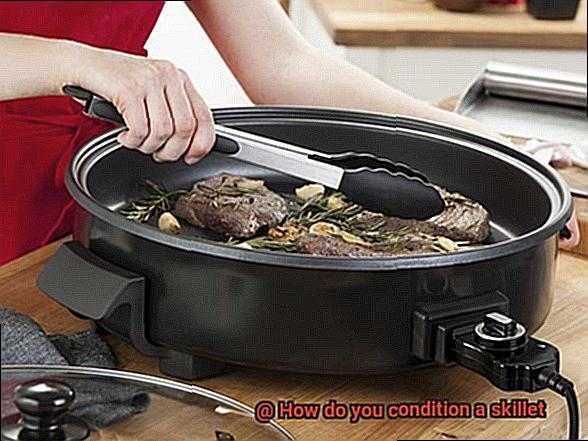
Step 2: Apply a Thin Layer of Oil
Once your skillet is clean and dry, it’s time to apply a thin layer of oil. This helps create a natural non-stick surface on the skillet. Use a paper towel or clean cloth to apply a small amount of oil (such as vegetable oil or flaxseed oil) all over the skillet’s surface, including the handle and any other exposed areas. Be careful not to use too much oil, as this can make the skillet greasy.
Step 3: Bake Your Skillet
After applying the oil, it’s time to bake the skillet in the oven. Place the skillet upside down on the middle rack of a preheated oven (set to 350 degrees Fahrenheit) for about an hour. This allows the oil to polymerize and create that coveted non-stick surface on the skillet.
Step 4: Repeat the Process
If you want maximum seasoning on your skillet, repeat the process of applying oil and baking up to six times. Each time you do this, the skillet will become more non-stick and easier to use.
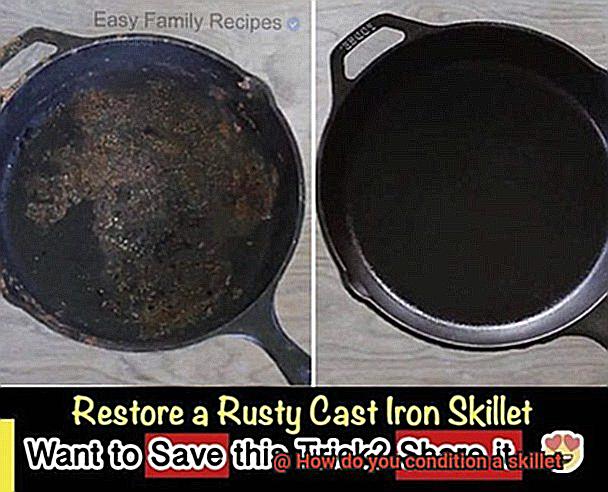
Step 5: Maintain Your Skillet
Now that your skillet is well-conditioned, it’s important to maintain it properly. After each use, clean it with hot water and a stiff-bristled brush. Avoid using soap, as this can strip away the natural oils on the skillet. Dry it off completely and apply a thin layer of oil before storing it. With proper maintenance, your cast iron skillet can last for decades.
How to Condition Stainless Steel Skillets
Stainless steel skillets are a popular choice for chefs and home cooks alike due to their durability, heat conductivity, and resistance to corrosion. However, to ensure that your stainless steel skillet performs at its best, it’s important to condition it properly. Here are five sub-sections with detailed steps to help you maintain your skillet’s quality and performance.
Thoroughly Clean Your Skillet
Before conditioning your skillet, make sure it’s clean. Begin by washing it with warm soapy water and drying it completely with a clean towel. Avoid using abrasive scrubbers that can scratch the surface of the skillet. Rinse it thoroughly with hot water and then dry it again.
Apply Oil to the Surface
Apply a small amount of cooking oil to the surface of the skillet using a paper towel or cloth. Spread the oil evenly over the entire surface of the skillet, including the sides and handle. Be sure to use high smoke point oils such as vegetable oil, canola oil, or grapeseed oil. Avoid using lower smoke point oils such as olive oil that can leave a sticky residue on the surface.
Heat Up the Skillet
Heat up the skillet over medium-high heat for a few minutes. This will help the oil penetrate into the pores of the stainless steel and create a non-stick surface. Keep an eye on the skillet as it heats up, as overheating can damage the skillet or cause the oil to smoke.
Let It Cool Down
Once you’ve heated up the skillet, remove it from the heat and let it cool down completely. Once it has cooled down, you can wipe away any excess oil with a clean towel or paper towel. This step is crucial because wiping away excess oil ensures that your skillet won’t have a greasy or sticky surface.
Regularly Condition Your Skillet
To maintain your skillet’s non-stick properties and prevent food from sticking to the surface, it’s important to condition it regularly. Conditioning your skillet after every use or once a month is ideal, depending on how often you use it. Remember to avoid using too much oil and using cooking sprays or other aerosol products on your stainless steel skillet, as these can leave a residue that is difficult to remove.
How to Condition Carbon Steel Skillets
If you’re an avid cook, you know the importance of having high-quality cookware. One of the best options for grilling enthusiasts is a carbon steel skillet. These skillets are durable, versatile, and provide excellent heat distribution, making them perfect for searing steaks and cooking eggs. However, like all cookware, they require proper maintenance to maintain their non-stick surface and longevity. Here are five sub-sections explaining how to condition your carbon steel skillet.
Understand What Conditioning Means
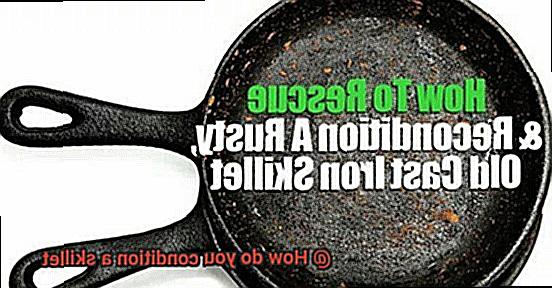
To condition a carbon steel skillet means creating a non-stick surface that polymerizes with a layer of oil, forming a protective coating. This process is called seasoning and takes time and patience.
Clean Your Skillet Thoroughly
Before seasoning your skillet, ensure it is clean by washing it with warm water and mild dish soap. Avoid using abrasive sponges or harsh cleaners that can damage the skillet’s surface.
Apply Oil to the Skillet
Dry your skillet completely before adding a small amount of oil and spreading it evenly across the surface using a paper towel or cloth. Make sure to coat the entire surface, including the sides and handle.
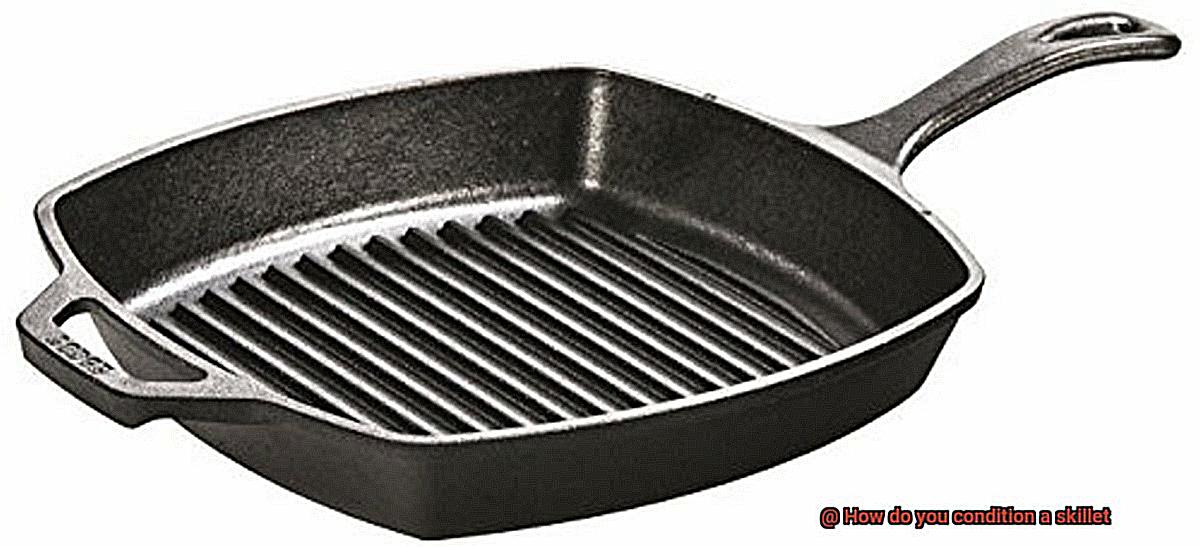
Heat Your Skillet
Heat your skillet over medium-high heat until it smokes. This helps open up the pores of the metal and prepares it for seasoning.
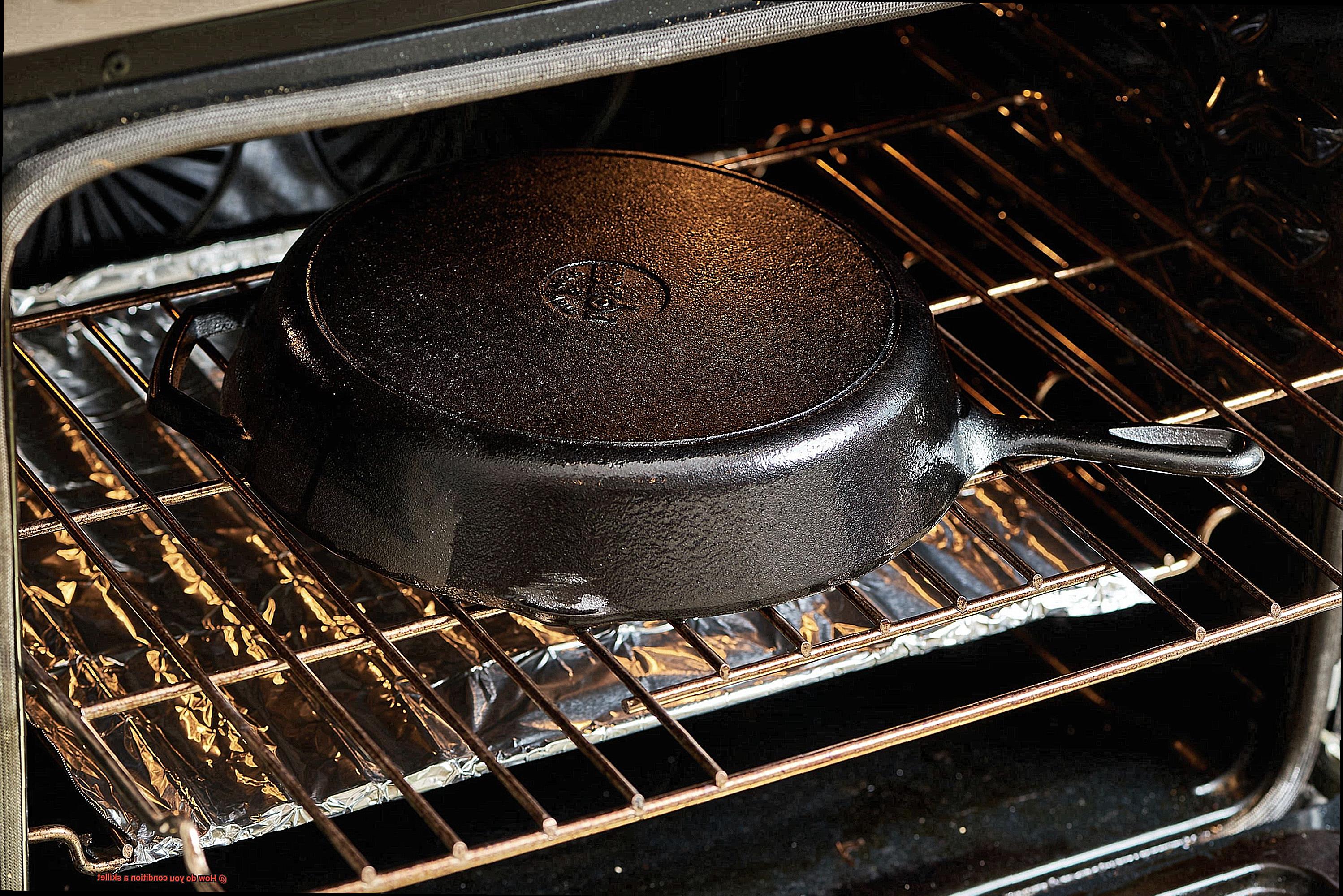
Season Your Skillet
Once heated, turn off the heat and let the skillet cool down before wiping off any excess oil with a clean paper towel. Repeat the process several times until the surface is dark and glossy.
Maintaining your carbon steel skillet’s non-stick surface requires periodic seasoning. Avoid using soap or abrasive materials when cleaning it, as this can damage the surface and remove the seasoning. Instead, use warm water and a soft cloth or sponge. After each use, dry the skillet completely and apply a small amount of oil to keep it well-conditioned.
How to Care for Ceramic Skillets
To ensure your ceramic skillet lasts for a long time, proper care is necessary. Here are five sub-sections that explain how to properly care for a ceramic skillet:
Seasoning your skillet
Before using your ceramic skillet for the first time, seasoning it is crucial. This process creates a protective layer on the surface of the skillet, preventing food from sticking. Use a high smoke point oil like vegetable oil, spread it evenly over the surface with a paper towel, and heat it over medium heat for 10-15 minutes until it starts to smoke. Let it cool before wiping off any excess oil.
Using the right utensils
While ceramic skillets are durable, they can be easily scratched by metal utensils. Avoid using metal utensils when cooking in your ceramic skillet. Instead, use wooden or silicone utensils to ensure no damage occurs.
Cleaning after every use
After cooking, allow the skillet to cool down before washing it. Use warm soapy water and a soft sponge or cloth to clean the surface of the skillet gently. Avoid using abrasive cleaners or scrubbers that can scratch the surface of the skillet.
Proper storage
Stacking ceramic skillets can result in scratches on their surfaces and damage to their non-stick coating. Store your ceramic skillet separately from other cookware to avoid any potential damage. You can also hang it on a pot rack or store it in a drawer.
Heat regulation
Ceramic skillets are not meant for high-heat cooking methods like searing or frying at high temperatures. Instead, use them for low-medium heat cooking methods like sautéing, simmering, or stir-frying. High heat can cause damage to the skillet’s integrity and reduce its non-stick properties.
Tips for Properly Caring for Your Skillet
Proper care is key to keeping your skillet in top-notch condition for years to come. Here are five tips for properly caring for your skillet:
Clean after each use
The first step in caring for your skillet is to clean it after each use. Use hot water and a soft sponge or cloth to wipe off any food residue. Avoid using harsh chemicals that may damage the seasoning of the pan. Instead, opt for natural solutions like a salt scrub or vinegar solution to help remove stubborn stains.
Season regularly
Regular seasoning is crucial for maintaining the non-stick surface of your skillet. To season your skillet, heat it up on low heat and add a thin layer of oil (such as vegetable oil or flaxseed oil) to the surface. Use a paper towel to spread the oil evenly across the surface and let it cook for a few minutes until it starts to smoke. Then turn off the heat and let the skillet cool before wiping away any excess oil.
Use wooden or silicone utensils
Avoid using metal utensils on your skillet as they can scratch the surface and affect the seasoning. Instead, opt for wooden or silicone utensils that won’t damage the pan.
Dry thoroughly
After cleaning your skillet, it’s essential to dry it thoroughly to prevent rusting. You can either air dry the skillet or heat it on the stove over low heat until all moisture has evaporated.
Store properly
Finally, store your skillet in a dry, cool place, away from moisture or humidity. Avoid stacking other pots and pans on top of it as this can scratch or damage the surface. You can also protect the skillet by placing a paper towel or cloth between stacked pans.
PDFuaSDXiPk” >
Conclusion
In summary, conditioning your skillet is a crucial step towards achieving a non-stick surface and prolonging the lifespan of your cookware. Regardless of whether you own a cast iron, stainless steel, carbon steel, or ceramic skillet, proper conditioning will ensure optimal performance.
The process of conditioning involves coating the skillet’s surface with oil and heating it up to create a non-stick layer. However, not all oils are created equal – high smoke point oils like vegetable oil or flaxseed oil work best while low smoke point oils like butter or olive oil should be avoided.
Regularly conditioning your skillet offers numerous benefits such as enhanced non-stick properties, improved durability, better heat distribution, and healthier cooking. By following the specific conditioning process for your skillet’s material and cleaning it after each use, you can enjoy these benefits while whipping up delectable meals.
It’s also important to use wooden or silicone utensils when cooking in your skillet, dry it thoroughly after cleaning to prevent rusting, and store it in a cool and dry place away from moisture or humidity.
With proper maintenance and care, a well-conditioned skillet can last for generations.

